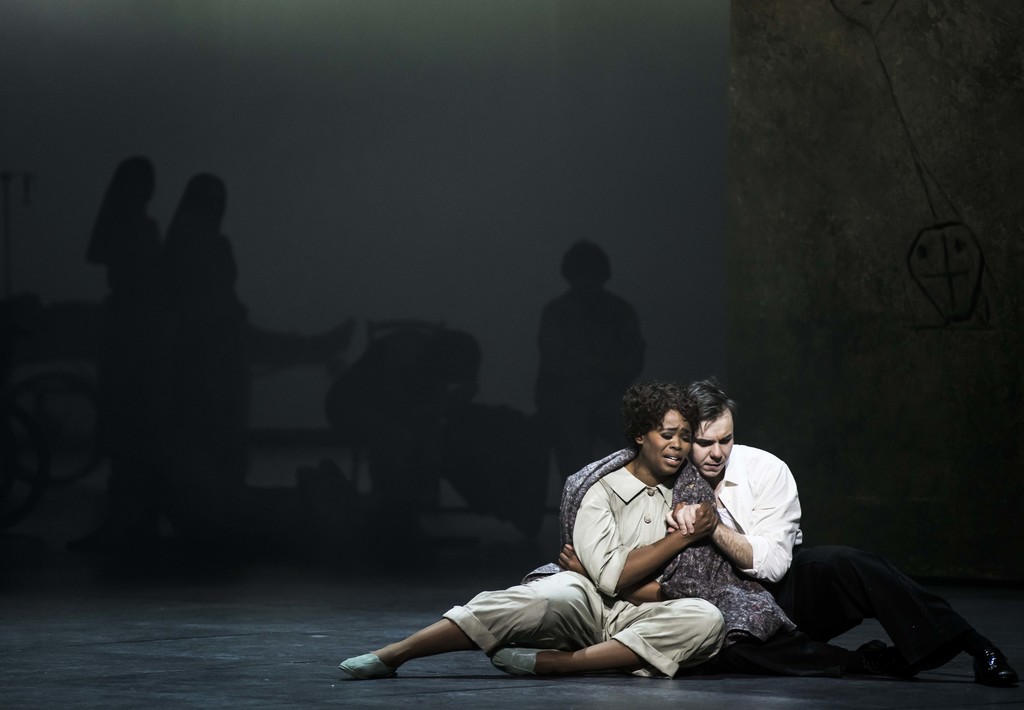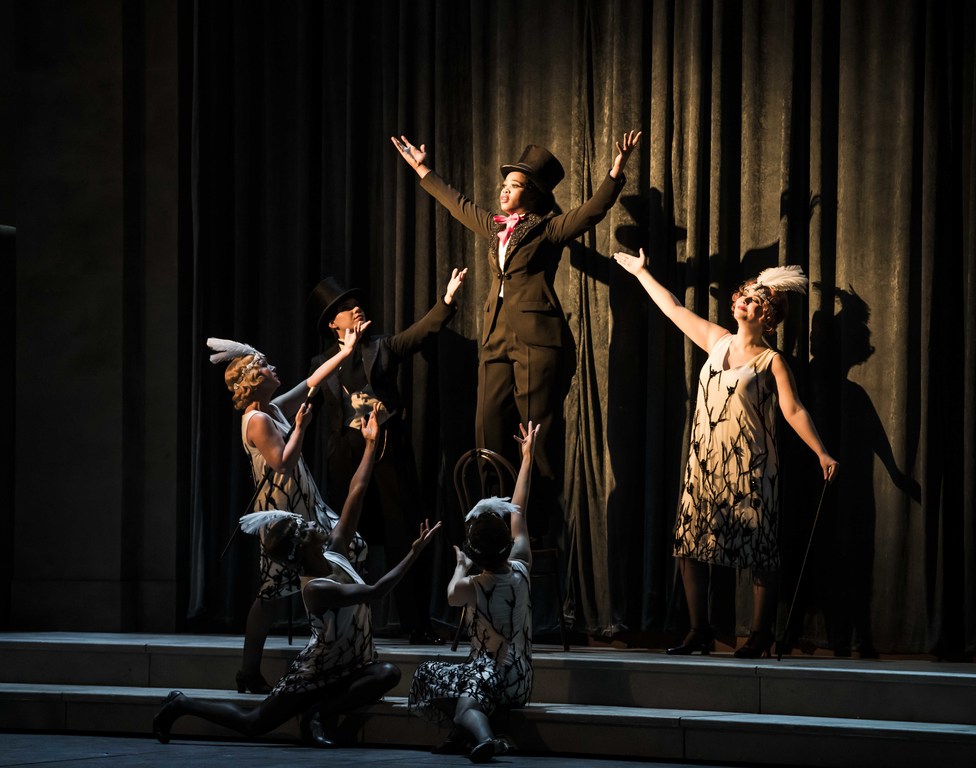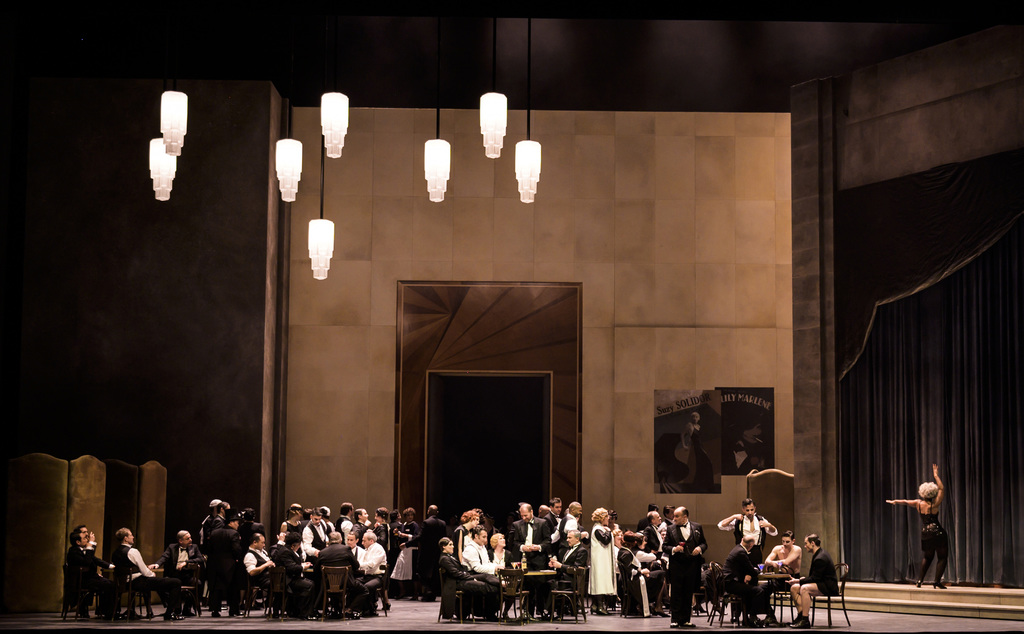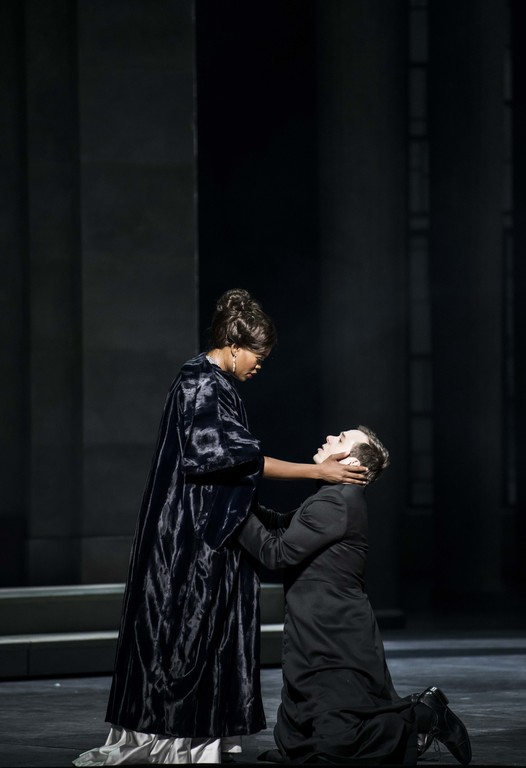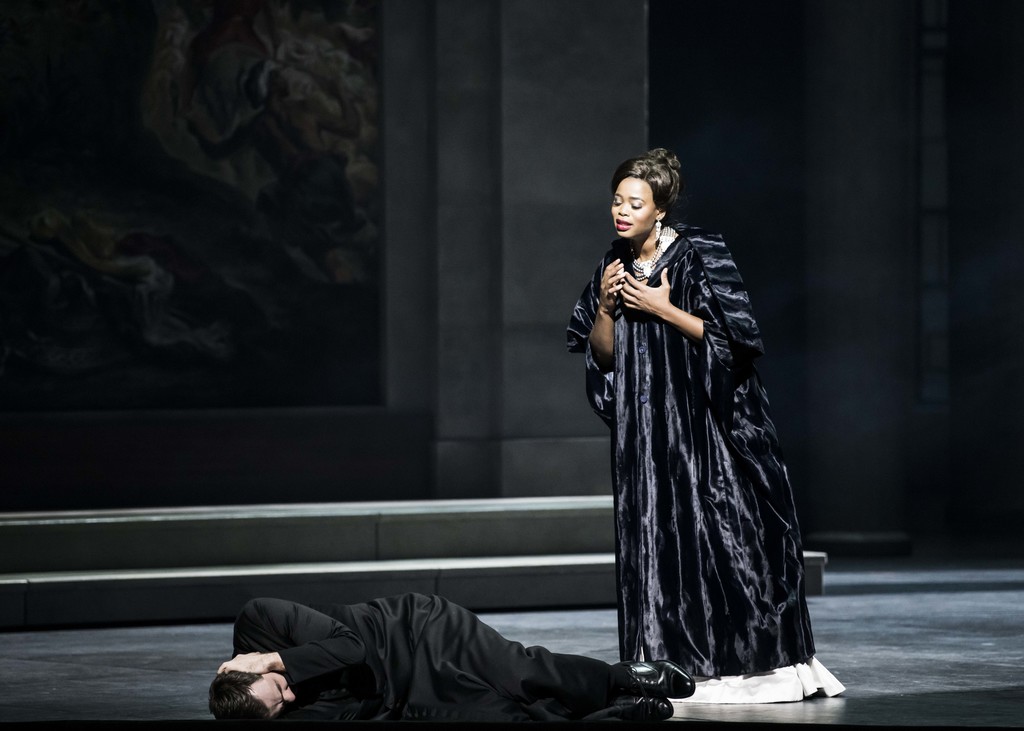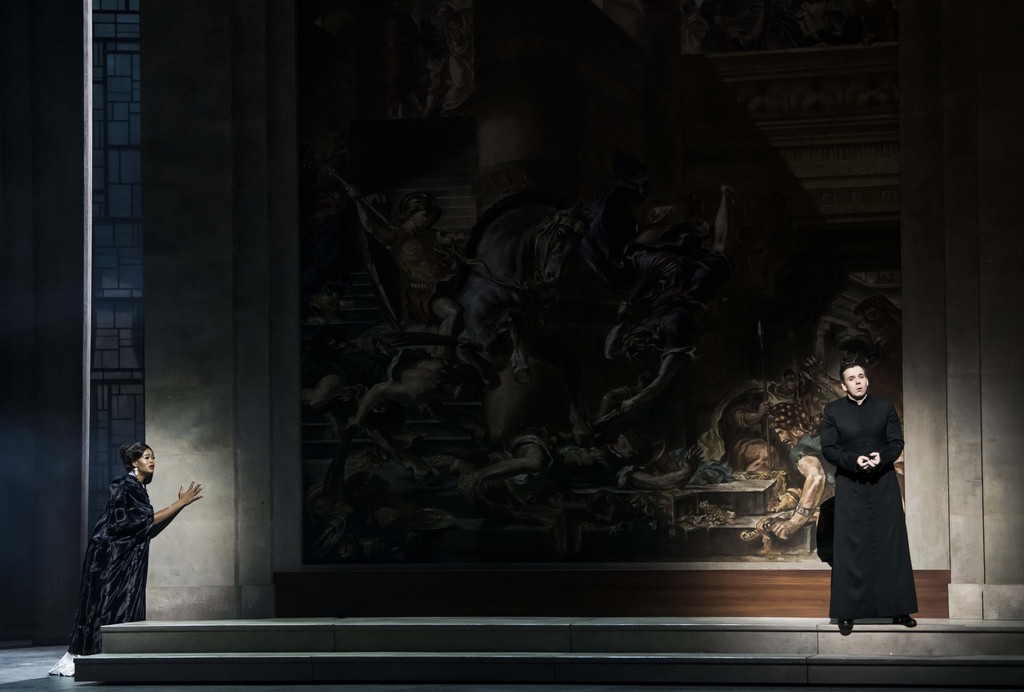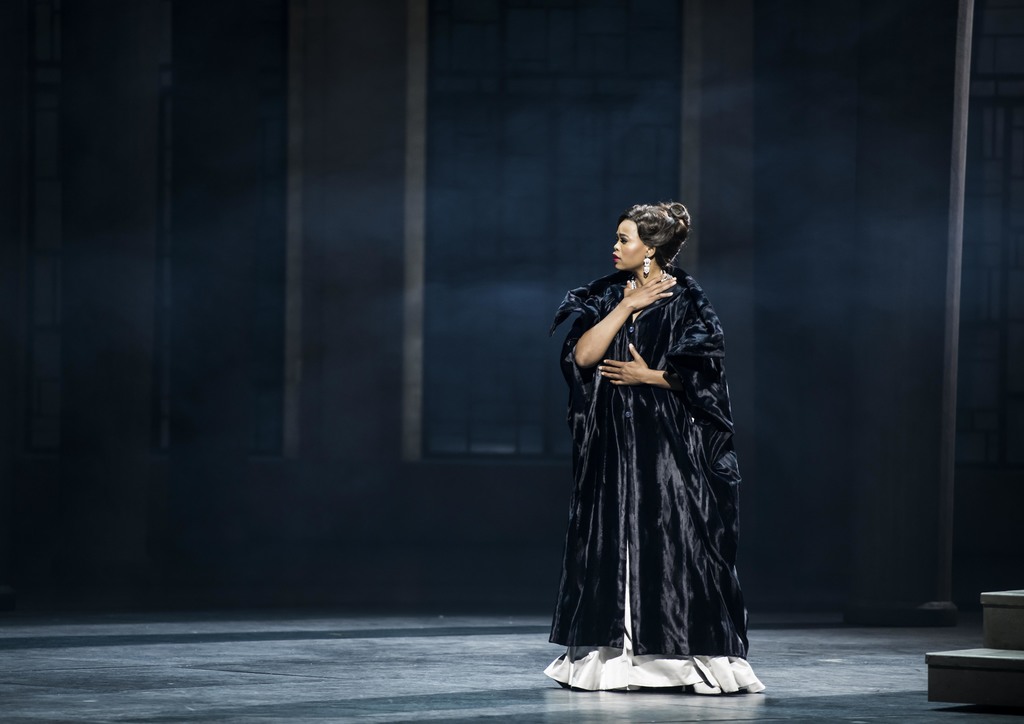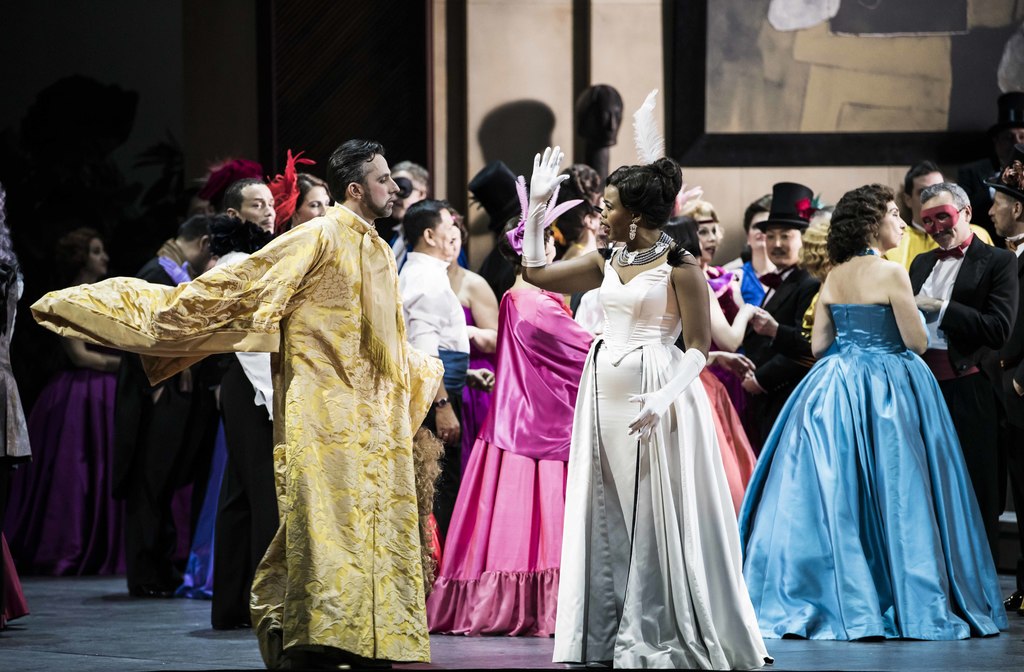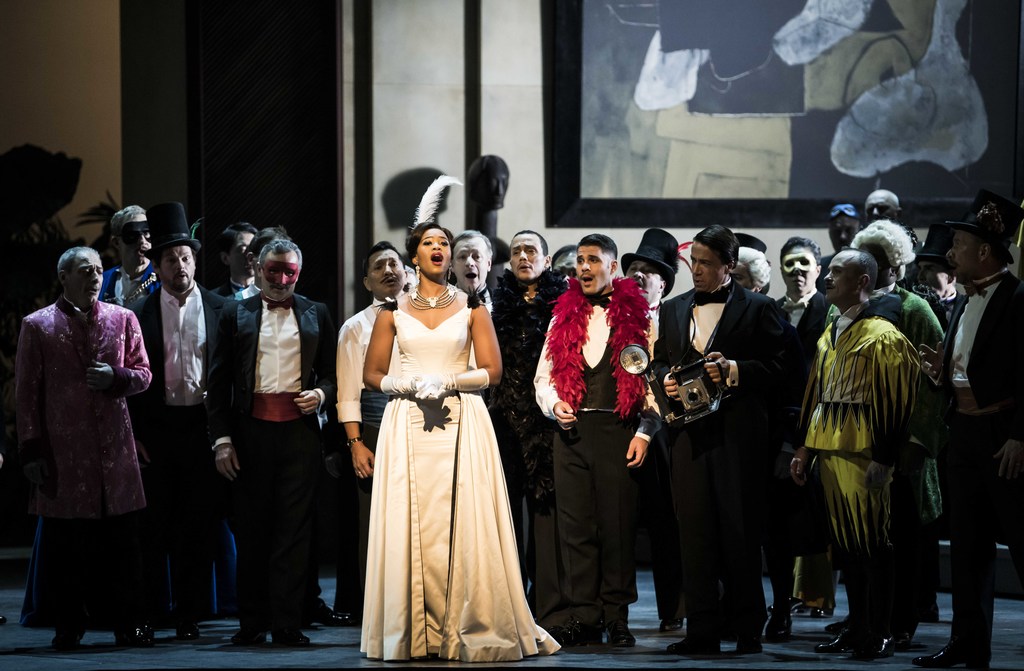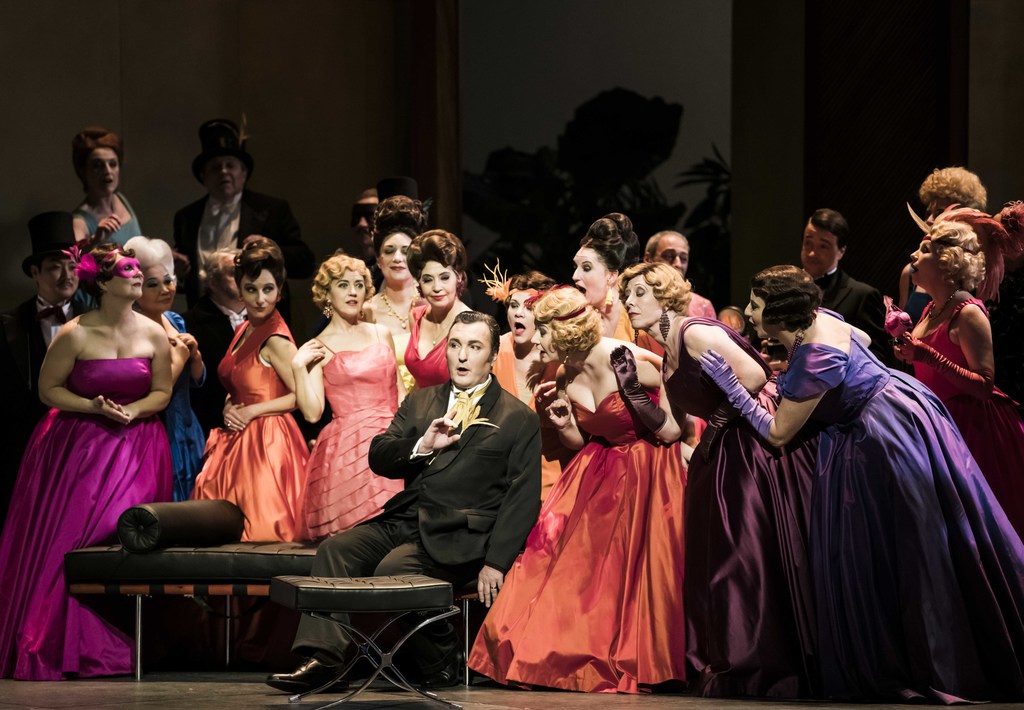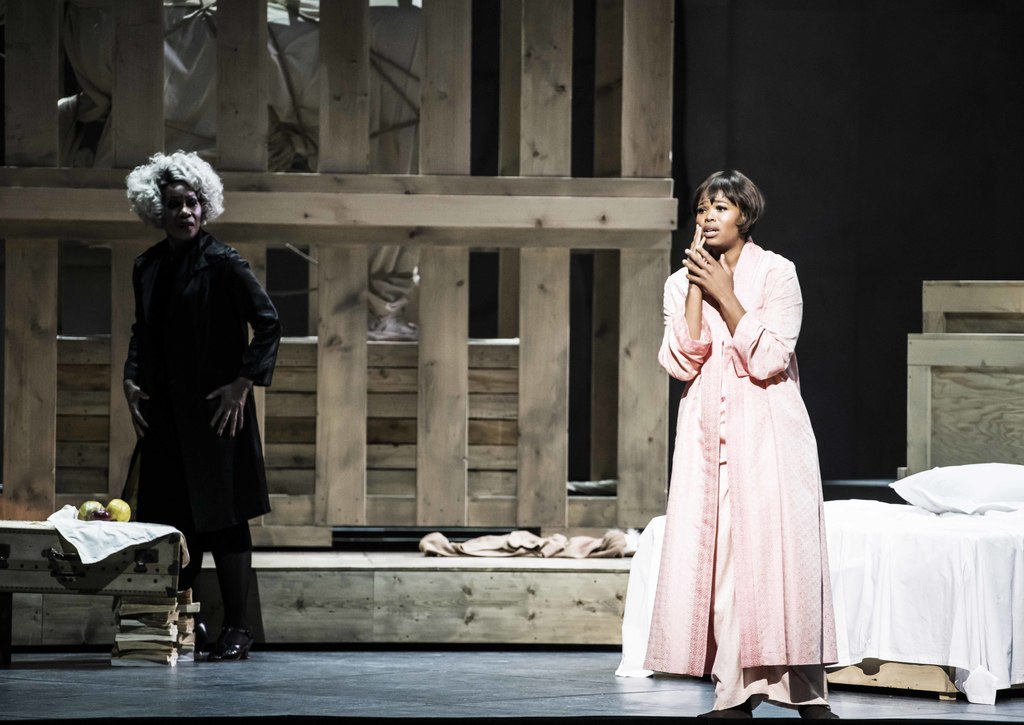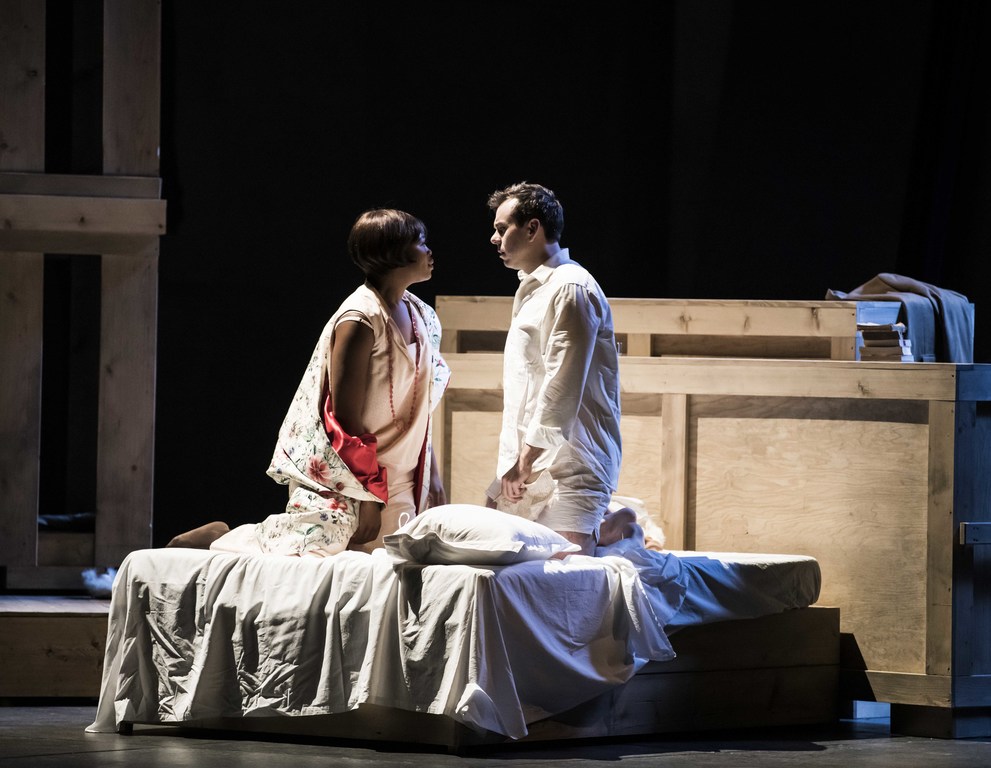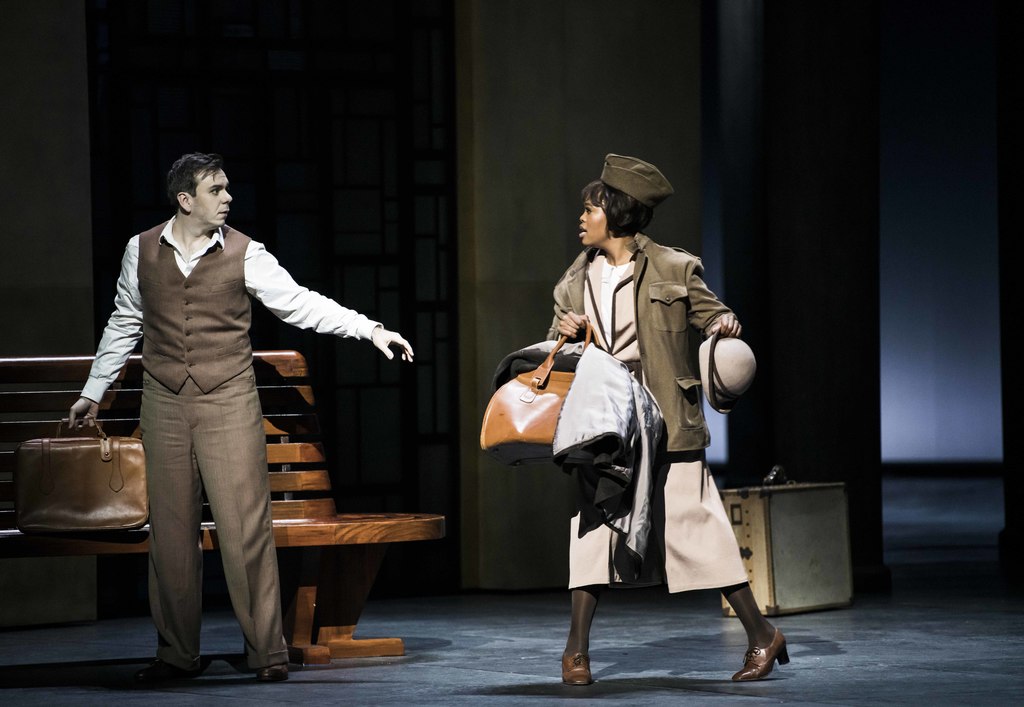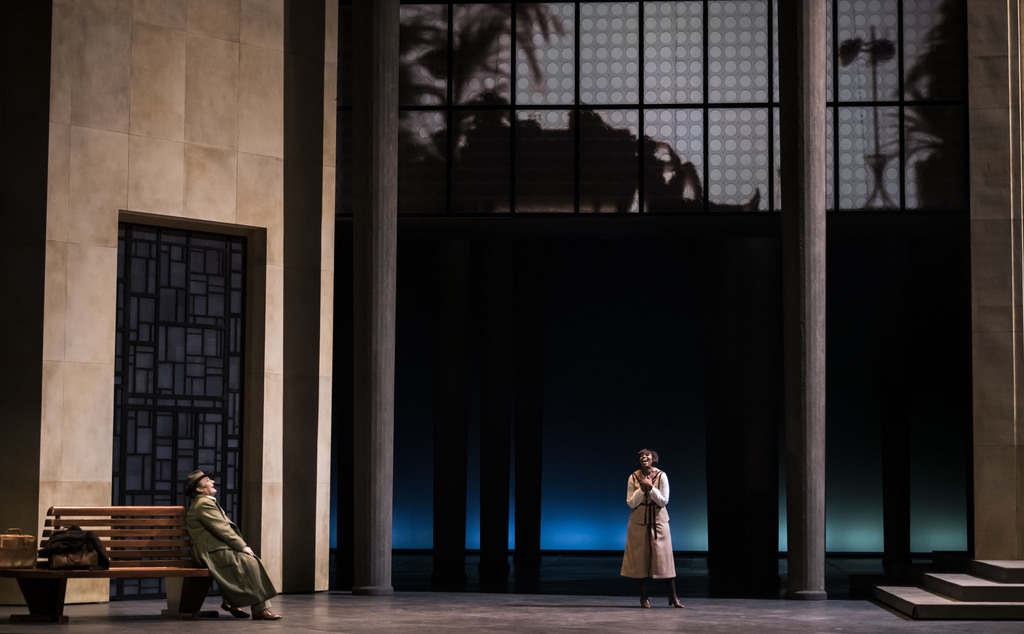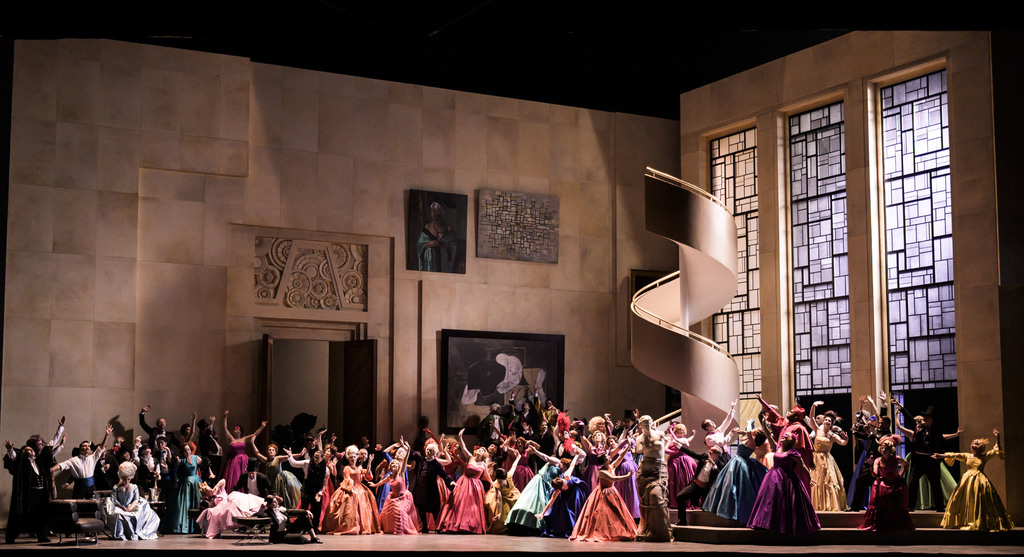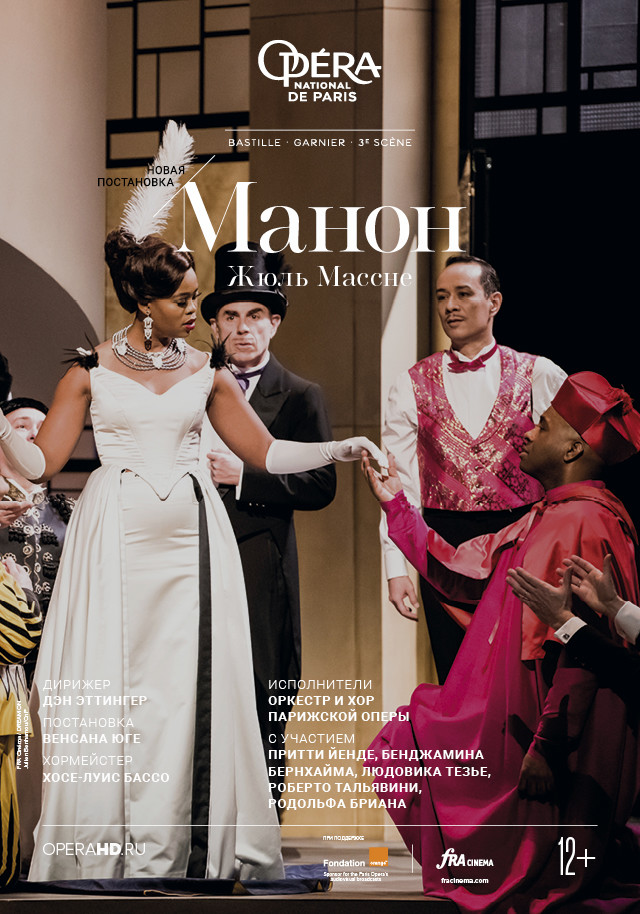
Act I – in the Attavanti chapel, in the church of Sant' Andrea della Valle
Escaped political prisoner Angelotti rushes into the church to hide. Soon, painter and fellow dissident Mario Cavaradossi arrives to work on a new portrait of Mary Magdalene, inspired by the visage of Angelotti’s sister, whom Mario has seen but has not met. He holds a miniature of the singer Floria Tosca, and compares the painting’s light features with Tosca’s dark ones. Angelotti emerges, but Mario urges him to hide again as they hear Tosca approaching. Tosca, always jealous, questions her lover Mario, prays, and reminds him of their planned meeting at his villa that night. Tosca then recognizes the face in the picture – Angelotti’s sister! She bursts with newfound jealousy, but Mario quells her suspicions. After she leaves, Angelotti emerges again – but cannon fire is heard, indicating that Angelotti’s escape has been discovered. The two men rush to Mario’s villa. The Sacristan enters with choir boys excited about their performance in a Te Deum that day. They are hushed when the chief of the secret police, Baron Scarpia, enters in search of Angelotti. Tosca re-enters, hoping to see Mario again, but is met by Scarpia, who produces a fan bearing the Attavanti crest – deepening her suspicions that her lover has been unfaithful. Tosca storms off, and Scarpia sends his men to follow her. He vows that he will have the singer in his power.
Act II – The Farnese Palace
Scarpia anticipates the joy he will have when Tosca is his. The spy Spoletta returns. He was unable to find Angelotti, so he brought in Mario for interrogation. Tosca is heard singing at a gala downstairs. She enters the room just as Mario is hauled off to the torture chamber, where the secret police hope to break his silence. Mario’s screams and Scarpia’s questioning break down Tosca’s resolve, and she reveals where Angelotti is hiding. Mario is carried in, and, realizing that Tosca has betrayed Angelotti, turns on her. Another one of Scarpia’s men enter and reports (erroneously) that Napoleon has won the Battle of Marengo – a defeat for Scarpia’s side. Mario exclaims in celebration and is taken to prison. Scarpia resumes his supper, and suggests to Tosca that she should give herself to Scarpia in exchange for her lover’s life. Tosca pushes him away as she protests her fate to God. Scarpia makes another move, but they are interrupted by Spoletta – Angelotti, facing capture, has killed himself. Tosca agrees to Scarpia’s proposition. He then seemingly orders a mock execution for Mario – “a la Palmieri,” he tells Spoletta, who responds knowingly and exits. As soon as Scarpia draws up a safe-conduct for the lovers, Tosca stabs him with a knife, killing him. She prays for him, wrenches the document from his hands, and leaves.
Act III – At the Castel Sant’ Angelo
Mario awaits execution. He tries to bribe a guard to give Tosca a farewell note, but soon Tosca appears, and gives him the good news. They revel in their newfound freedom. Tosca then gives Mario an acting lesson on how to die convincingly before the firing squad. The firing squad arrives, shoots Mario, and departs. Tosca urges Mario to get up, and to hurry. When he doesn’t move, she realizes that she has been deceived by Scarpia – the bullets were real. Spoletta rushes in to arrest Tosca for the murder of Scarpia, but Tosca cries out that she will meet Scarpia before God, and leaps to her death.
